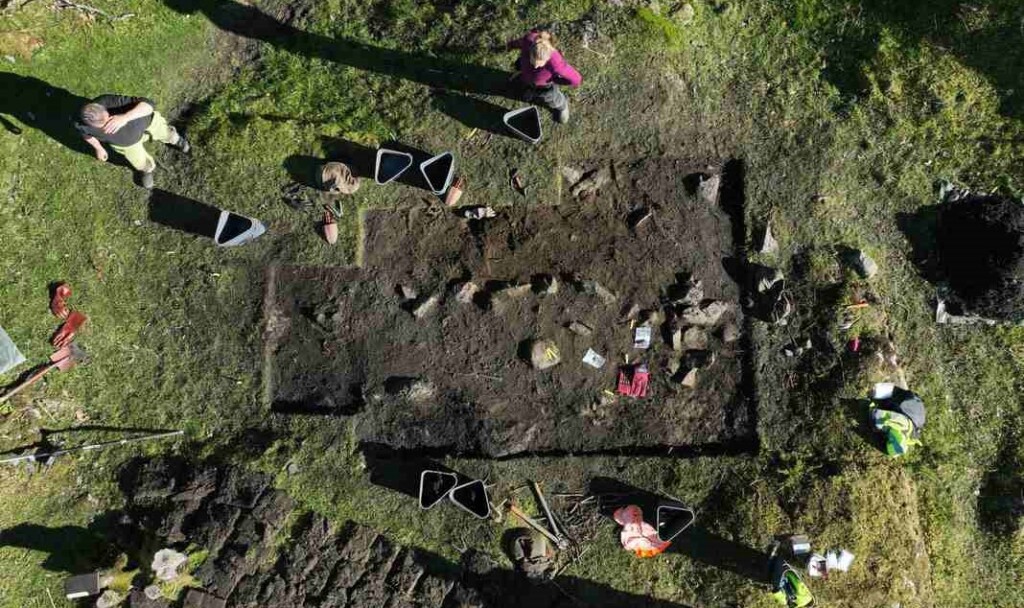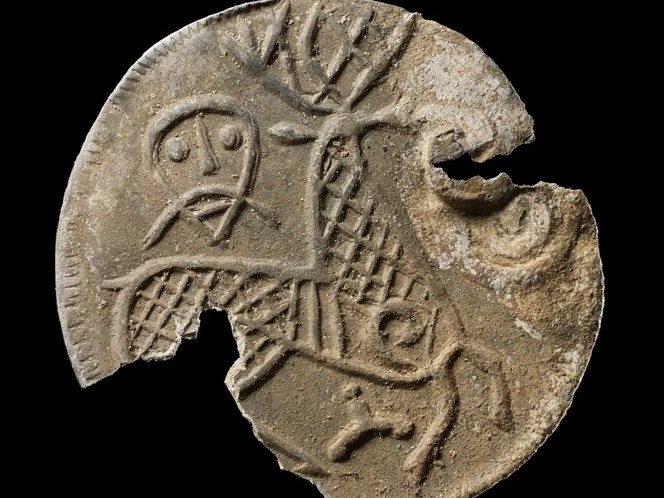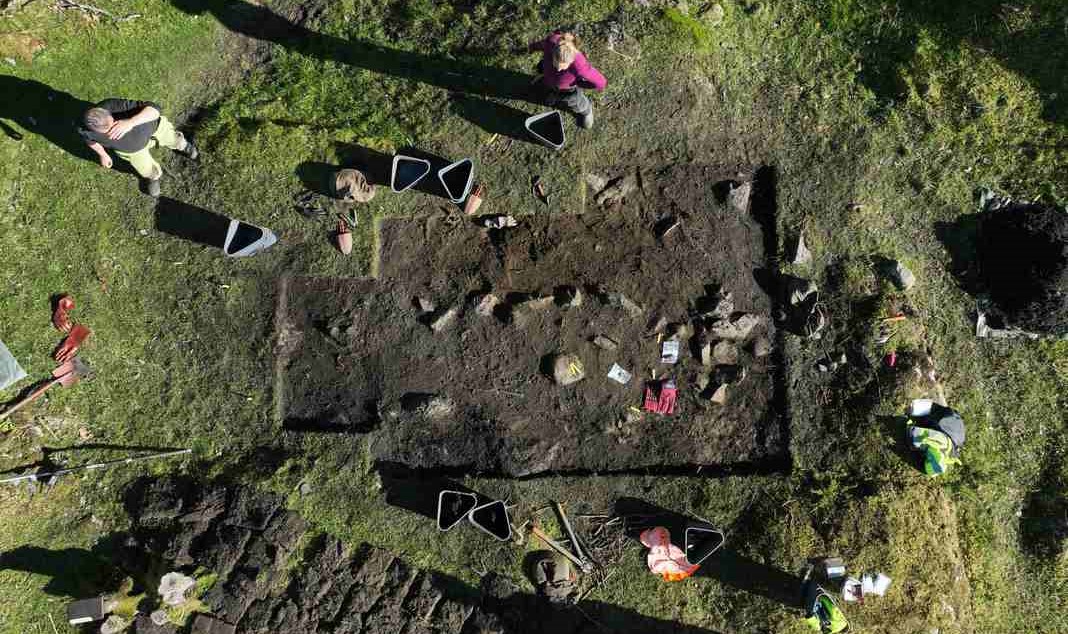
A curious Viking age graveyard has been uncovered in southwest Norway containing jewelry and evidence of continental connections.
Three high-status women, though perhaps not Scandinavians themselves, were, or perhaps were not, interred there, and these uncertainties have raised interesting hypotheses.
Located near the coast in a Norwegian town called Fitjar at a farm called Skumsnes, the site was originally found by recreational metal detectives. Excavations took place in late 2024 and uncovered a variety of objects, such as a frying pan and textile equipment, that singled out the owners as women.
Jewelry and coins, including one of the first coins ever minted in Denmark, a necklace of glass beads, and a brooch that appears to have been made from a metal book clasp, also suggest the owners possessed noteworthy wealth and status.
“We think that the clasp in the first grave could very well have come from a Bible in England or Ireland,” says Søren Diinhoff, an archaeologist with the University Museum of Bergen, told Fox News Digital. “It had been ripped off and brought back to Norway where it eventually ended up as a woman’s brooch.”
Dating to the mid-9th century when the Viking age was in full swing, the provenance of some of the items almost certainly came through violent means. Other brooches made of trefoil appear to have been repurposed from the clasps of Carolingian sword belts, and, according to Diinhoff and a report from Science Norway, other items could have come from mainland Europe. 10 of the 11 coins found in the grave were minted by Louis I, a descendant of Charlemagne.
Were these items taken during a raid or did they come through trading? The word ‘Viking’ meant both trader and raider, and at different times in different places, the trader-raider balance varied.
One hypothesis is that the women themselves were from the continent, and perhaps married into the local population. However, it’s difficult to know because there are no human remains in the graves. To explain this, Diinhoff and others at first supposed the remains disintegrated in the moist soil—a common occurrence. Then, they changed their idea to the burial site being more of a memorial or cenotaph where offerings were left.

This seems more likely to the archaeological team, since the necklace of glass beads was wrapped in a leather sack rather than placed around someone’s neck.
MORE STUNNING VIKING AGE FINDS: Archaeologists Confirm Oldest Viking Ship Burial in All Scandinavia–Could Rewrite the Viking Age
As to why this memorial exists, the site of Skumsnes is key. The excavation team knows that a large manor farm once existed at Skumsnes, and its position close to the water may have made it a common place of rest for travelers and sailors.
“Below the level of royal estates, we find strategic farms like Skumsnes,” Diinhoff told Science Norway. “On behalf of the king, shelter was provided to passing ships, which likely generated additional income.”
DIVE DEEPER INTO VIKING CULTURE: Surprising Sophistication of the Viking Legal Code Newly Discovered in Carved Runes
Farms were typically the sites of textile production, and a weaving sword, spindle whorl, wool shears, and a key suggest the people buried or not buried there were involved in weaving, a prestigious trade.
Interestingly, the site was contained within a perimeter of small stones in the shape of a boat—reminiscent of the rare Viking ship burials. In the center of the boat outline, where the mast would be fixed on a real boat, the archaeologists found a large stone with an indent in the shape of female genitalia.
For Diinhoff, this was the ultimate indication that the burial honored the women of the farm, without actually containing their remains.
MORE STORIES LIKE THIS: Gold Disk Unearthed Contains Oldest Reference to Norse God Odin: ‘A Huge Discovery’ of ‘Pure Ecstasy’
The excavation team ran out of time before they could fully uncover the third ‘grave,’ and metal detectives have confirmed other locations that suggest there may be 20 such ‘graves’ within and around the memorial.
Science Norway reports that archaeologists have seen a remarkable surge in the number of Viking age graves discovered recently; as much last year as in the previous ten, said Diinhoff.
SHARE This Fascinating Viking Age Discovery And Its Mysteries With Your Friends…




















